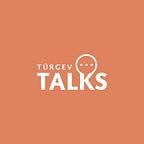Images of the Unconscious by Zulfiqar Awan- Lesson IV
Last week we examined the “ History of Violence ” film. We looked at the connection between events and genetics. We learned that we can find our own demons i n some way. Something can activate our genes. So we went on the journey this week and focused on the shadow and death drive in that lesson. We came across the other within us.
● “Dr. Jekyll and Mr. Hyde” is a very powerful example of shadow in literature. You should absolutely check it out. Jung says, “One does not become enlightened by managing figures of light but by making the darkness conscious.” Therefore it is vital to confront your darkness. It can be full of demons and horrible things. But if you do not explore it, you cannot fix it.
Jung developed the idea of shadow from Freud’s personal unconscious. What is an archetype?
“Archetypes are recurring images, descriptive detail patterns, landscapes, and plot or character patterns that appear frequently in literature, folklore, religion, and myth. They are universal patterns and shapes that ignore cultural, geographical, and temporal boundaries” (C. G. Jung Institute of New York) Jung had taken the idea of archetypes from Plato’s form and they are universal, you can see them in every aspect of life. They are highly used in arts such as literature and film which reflect life itself. Archetypes passed on through genetics. And it also emerges in dreams. So it is important to record your dreams. As you can observe n the move “ Dangerous Method” , Freud and Jung had a very strong connection. They spoke non-stop for 13 hours, when they first met. “ Correspondence between Jung and Freud” book helps you to understand that connection better. They had points in common as well as different points. They differ in the unconscious and drives. Unconscious is a dustbin according to Freud. It has some elements based on familiar zone , environmental zone and value system. They both believed in the personal unconscious but Jung took it further and discovered “the collective unconscious”. “The Personal Unconscious contains suppressed events, values, and fears of one’s own life. The Collective Unconscious holds the inherited or taught ideas that persist as memories in the unconscious mind of every individual.” (C. G. Jung Institute of New York)
Myth is a collective representation of the unconscious. It contains archetypes that everyone can identify with such as the witch, the villain, the hero, and the orphan boy. The Shadow Archetype Stephen Zweig s one of the literary figures influenced by Jung. He shows the shadow always emerges in everyday life. It is beyond our wonderful masks we wear(persona). The more you repress , the more you do not confront yourself, the more you bury within yourself, the bigger shadows you get.
He says, “Within each woman and man, the dim cavern of the unconscious holds our forbidden feelings, secret wishes, and creative urges. Over time, these ‘dark’ forces take on a life of their own, forming an intuitively recognizable figure — the Shadow. A recurring theme in literature and legend, the Shadow is like an invisible twin, a stranger that is us, yet is not us. When it acts out in the public domain, we witness our leaders, like hero-villains, fall from grace in scandal. Closer to home, we may feel overcome with rage, obsession, and shame or succumb to self-destructive les, addiction, and depression. These appearances of the Shadow introduce us to the Other, a powerful force that defies our efforts to tame and control it.” In literature, often the hero’s Shadow is embodied within a foil character. But not every hero/villain pairing s a true Shadow relationship. When the hero’s darker side exists within another character, there must also be a strong surface connection evident between the protagonist and antagonist. They are similar, but disparate. The similarities pull them together as the differences tear them asunder. So you can find your shadow within the people that you did not like. Also what genre you love most gives you a clue about it. Within the Batman film The Dark Knight, the co-dependent relationship between hero and villain, light and dark, is pushed to center stage. The Joker repeatedly states that the existence of Batman spurned the creation of the Joker, that each operates against and because of the other. Every coin needs two sides and although the Joker states it flippantly, there is a meaningful subtext when he says to Batman, “You complete me”.
● “12 Rules for Life” by Jordan Peterson : It shows that everything is possible with its opposite n the world. Reason and chaos should be together. So you have to go beyond the reason. Nietzsche called that “Apollon” and “Dionysym”.
● The Master and his Emissary” by Ian McGilchrist: We gave importance to one part of the bran. That s the modern education problem. That s why we are n chaos. Death Drive: Freud With the publication of his book Beyond the Pleasure Principle n 1920, Freud concluded that all instincts fall into one of two major classes: life instincts( Eros) or death instincts(Thanatos). Sabina Spielrein firstly talked about those terms and Freud developed it. The destructiveness of WWI urged them to think about death drives. Eros is procreations, social cooperation and survival. Thanatos is aggression, risky behavior, and reliving trauma.
